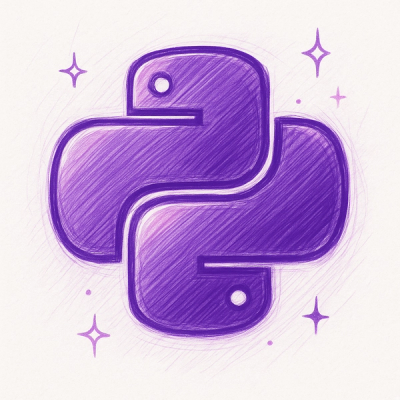Timeline-arrow
Following the issue of vis https://github.com/almende/vis/issues/1699, and thanks to the comments of @frboyer and @JimmyCheng, I have created a plugin to easily draw lines to connect items in the vis Timeline module.

Install & initialize
1 - Download the package
npm install timeline-arrows
2 - Import the class Arrow from arrow.js in your project
3 - Create your timeline as usual (see vis-timeline docs).
For instance:
const myTimeline = new vis.Timeline(container, items, groups, options);
4 - Create your arrows as an array of objects. These objets must have, at least, the following properties:
- id
- id_item_1 (id of one timeline's items)
- id_item_2 (id of the other timeline's items that you want to connect with)
And optionally:
- title (insert a text and it will show a title if you hover the mouse in the arrow)
- color (set individual arrow color, overrides the global color option)
- direction (arrow direction: 0=no arrows, 1=forward only, 2=backward only, 3=both directions)
- line (line type: 0=solid line, 1=dashed line)
For instance:
var arrowsSpecs = [
{ id: 2, id_item_1: 1, id_item_2: 2 },
{ id: 5, id_item_1: 3, id_item_2: 5, title: 'Hello!!!', color: '#ff0000', direction: 1 },
{ id: 7, id_item_1: 6, id_item_2: 7, line: 1 },
{
id: 10,
id_item_1: 3,
id_item_2: 8,
title: 'I am a title!!!',
color: '#00ff00',
direction: 3,
line: 1,
},
]
5 - Create your Arrow instance for your timeline and your arrows.
For instance:
const myArrows = new Arrow(myTimeline, arrowsSpecs)
That's it :)
Options
Options can be used to customize the arrows. Options are defined as a JSON object. All options are optional.
const options = {
followRelationships: true,
color: '#039E00',
tooltipConfig: (el, title) => {
},
}
const myArrows = new Arrow(myTimeline, arrowsSpecs, options)
followRelationships - defaults to false.
If true, arrows can point backwards and will follow the relationships set in the data. If false, arrows will only follow the timeline direction (left to right).
color - defaults to "#9c0000".
Sets the arrows color.
strokeWidth - defaults to 3 (px).
Sets the arrows width in pixels.
tooltipConfig - if arrows have a title property, the default behavior will add a title attribute that shows on hover. However, you might not want to use the title attribute, but instead your own tooltip configuration.
This method takes two arguments, el - the arrow - and title - the content of the title property set in the arrow data.
hideWhenItemsNotVisible - defaults to true.
When you zoom the timeline and both items go out of the screen. You can set if the arrow is still visible. By default, the arrow hides, but you can change it setting this option to false.
Arrow Properties
Each arrow can have the following individual properties:
color - Optional. Set individual arrow color (including the arrowhead). This overrides the global color option.
Example: color: '#ff0000'
direction - Optional. Controls arrow direction. Defaults to 1.
0 = No arrows (simple line connection)1 = Arrow always at the second event (id_item_2)2 = Arrow always at the first event (id_item_1)3 = Arrows on both ends
line - Optional. Controls line style. Defaults to 0.
0 = Solid line (default)1 = Dashed line
type - Optional. Controls the shape of the line. Defaults to 0.
0 = Bezier (default, smooth curve)1 = Straight line (center to center)2 = Cornered line (2 or 4 bends, attaches to the side of events)
align - Optional. If set to 'center', the line is straight and connects the centers of events (used with type 1).
title - Optional. Text that appears on hover.
Example with all properties:
{
id: 1,
id_item_1: 3,
id_item_2: 8,
title: 'Custom arrow',
color: '#00ff00',
direction: 1,
line: 1,
type: 2,
align: 'center'
}
Methods
I have created the following methods:
getArrow ( arrow id ) Returns the arrow whith this arrow_id.
For instance:
myArrow.getArrow(2)
getIdArrows () Returns the list of Id arrows
For instance:
myArrow.getIdArrows()
addArrow ( arrow object ) Inserts a new arrow.
For instance:
myArrow.addArrow({ id: 13, id_item_1: 15, id_item_2: 16 })
removeArrow ( arrow_Id ) Removes the arrows with this arrow_Id.
For instance:
myArrow.removeArrow(10)
removeItemArrows ( item_Id ) Removes the arrows connected with Items with this item_Id. Returns an array with the id's of the removed arrows.
For instance:
myArrow.removeItemArrows(23)
removeArrowsBetweenItems (itemId1, itemId2) Removes the arrows between item 1 and item 2.
For instance:
myArrow.removeArrowsBetweenItems(3, 8)
Examples
You can see some working examples here:
https://javdome.github.io/timeline-arrows/



